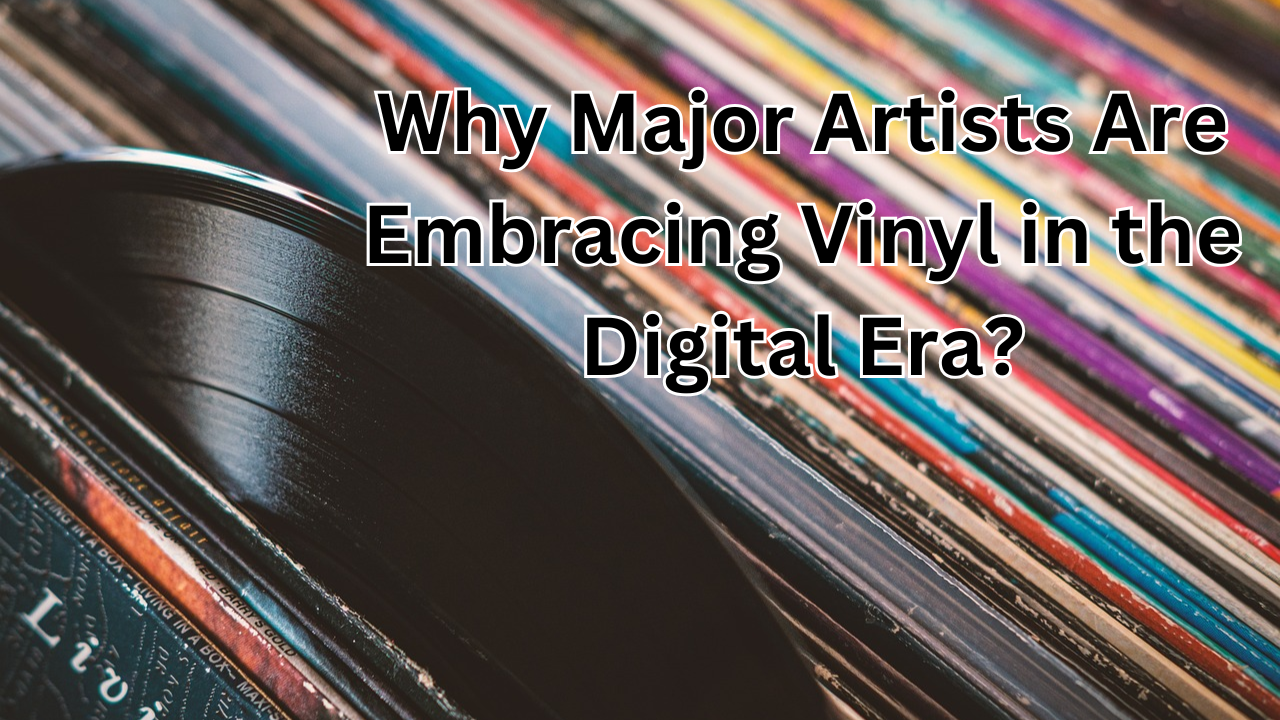You might be surprised to learn that vinyl sales have been steadily increasing in recent years. In fact, vinyl outsold CDs in 2023 for the first time in decades! Yeah, you read that right. In a world where digital music reigns supreme, vinyl is making a serious comeback. But why are major artists embracing vinyl again, especially when digital streaming seems to dominate? Let’s dive in and see what’s driving this unexpected revival. Spoiler alert: it’s not just nostalgia.
Contents
Vinyl’s Unique Appeal
Okay, let’s be honest. Vinyl records are not the most convenient way to listen to music. You can’t just hit “play” and let it shuffle everything like on your Spotify playlist. You’ve gotta be in the right mood, put the needle on the record, and actually pay attention to what’s spinning. But that’s exactly what makes vinyl so special. There’s something about it—something tactile, almost ritualistic—that just hits different.
I remember the first time I popped a vinyl record onto my turntable. It was a Sunday morning, rainy outside, and I thought, “Why not?” The warm sound, the crackle before the music starts, and the massive album artwork—it felt like an experience, not just background noise. You can’t get that from streaming. Sure, digital music is convenient, but there’s no analog warmth, no tangible connection to the art. For real, the sound from a vinyl record feels… fuller. More alive. It’s not just music, it’s a vibe.
Artists have recognized that too. They get that vinyl is a nostalgic experience for listeners, sure. But it’s also a way to reconnect with their fans on a deeper level. Let’s be honest, you’re not framing your digital playlist. But that vinyl? That’s something you display. You own it in a way you don’t with a digital file. And there’s something personal about flipping through vinyl records, picking one out, putting it on the turntable—it’s like saying, “Hey, I’m going to take my time with this.”
Major Artists Leading the Vinyl Revival
Believe it or not, some of the biggest names in music are now releasing vinyl records in the age of streaming. Take Adele, for example. Her album 25 went platinum on vinyl, despite having millions of streams. Why? Because vinyl isn’t just for older generations; it’s a way for fans to physically connect with the artist’s work. Plus, limited-edition vinyls often come with special artwork, signed copies, or extra tracks that aren’t available anywhere else. And who doesn’t love a little exclusivity?
Taylor Swift is another example. She has been a vocal supporter of vinyl records, and she often releases special versions of her albums on vinyl, which have become collector’s items. People line up for hours to snag one of her limited-edition vinyls, and they sell out quickly. It’s crazy how much demand there is for vinyl in this digital age, but it just goes to show how much fans appreciate owning something physical, especially when it comes from their favorite artists.
I’ve even seen smaller, indie artists jumping on the vinyl train. It’s not just about the music, it’s about building a brand and creating a fan experience. They know that vinyl is a unique, tangible way for listeners to connect with them. And let’s be honest—vinyl is cool. Having a vinyl collection feels almost like a badge of honor among music lovers. It’s something to show off and proudly say, “Yeah, I’m a music nerd.”
Vinyl’s Role in Branding and Marketing
Here’s the thing about vinyl: it’s not just about the music. It’s an integral part of an artist’s branding. Vinyl records often come with exclusive artwork, special inserts, and bonus tracks. Some albums are even released with hand-signed covers, making them a must-have for serious collectors. But it’s not all about just putting out any old record. Artists and labels have figured out that the more exclusive the vinyl, the more fans are willing to pay.
I’ll admit it—I’ve fallen victim to the whole “limited-edition vinyl” craze. When an artist I love releases a vinyl edition that’s numbered or includes a behind-the-scenes booklet, I’m all in. It’s part of the experience. Plus, there’s something way more satisfying about holding a physical album that you know is rare. Trust me, I once got my hands on a signed vinyl from my favorite band, and it felt like I had won a mini lottery.
Artists are using vinyl to add another layer to their marketing strategy. Imagine being able to say, “I’ve got the limited-edition vinyl version of this album!” It adds to the excitement, makes it feel more exclusive, and builds up hype. The digital world is so fast-paced, but vinyl offers a slow-burn experience that makes fans feel like they’re part of something special.
The Growing Vinyl Market
I don’t know if you’ve been paying attention, but vinyl is doing numbers. In 2023, vinyl sales surpassed CD sales for the first time since the 1980s. That’s huge. People are buying vinyl like it’s 1975 again. What’s even crazier? Vinyl is no longer just for audiophiles. It’s for anyone who wants to engage with music on a deeper level. Whether you’re new to the world of vinyl or a lifelong collector, it’s clear that this market is growing—and fast.
Why is this happening? Well, for one, the quality of modern vinyl pressings is better than ever. Gone are the days of scratching or skipping. Today’s records are pressed with precision, offering fantastic sound quality that digital music can’t quite match. There’s also something about the ritual of playing a vinyl record that streaming can’t replicate. You can’t just click a button and let it play automatically. You have to commit to the album. And that commitment makes the music feel more meaningful.
For artists, the vinyl market isn’t just a way to engage with fans—it’s a revenue stream. Vinyls are often priced higher than digital albums or CDs, and the special editions make them even more valuable. It’s a win-win: fans get something physical and collectible, and artists make money off of it.
Why the Digital Era is Fueling Vinyl’s Comeback
You might be thinking, “Wait, isn’t digital music the way to listen to music now? Why is vinyl coming back?” Here’s the thing: digital music is convenient, but it doesn’t offer the same connection to the music as vinyl does. Streaming is great for background music while you’re doing laundry, but when you want to experience an album in full, vinyl is the way to go. It’s an active listening experience, and it makes you pay attention to the music in a way that streaming doesn’t.
In a world where music is so accessible and disposable, vinyl offers a moment of pause. It’s like saying, “Hey, let’s slow down and enjoy the music.” And in today’s world, where everything is instant and fast, taking the time to really listen to an album feels refreshing.
Plus, the physicality of vinyl allows fans to own their music. Sure, you can “own” a song on your phone, but what does that really mean? With vinyl, you have something tangible, something real that you can touch, display, and care for. Vinyl isn’t just about nostalgia; it’s about giving fans something physical to connect with, in an increasingly digital world.
Conclusion
So there you have it—major artists are embracing vinyl in the digital era because it offers a unique, meaningful way for fans to connect with their music. Vinyl is more than just a trend; it’s a way for fans to engage with music on a deeper level and for artists to create an experience beyond just the audio.
If you’re into music, vinyl is a must-try. Whether you’re a casual listener or a dedicated collector, there’s something about spinning a record that digital just can’t replicate. Do you have a vinyl collection? Or maybe you’ve been thinking about starting one? I’d love to hear your thoughts—drop a comment below and share your experience with vinyl!
Also read these

I am Kenneth Haney, an unyielding audiophile and an ardent collector of vinyl records. My love affair with vinyl started at a young age of 15. As a teenager, I found myself enchanted by the distinct warmth and depth that vinyl brought to music. Unlike digital music, vinyl records carry a tangibility, a piece of history, an art that exists far beyond the confines of an MP3 file.
